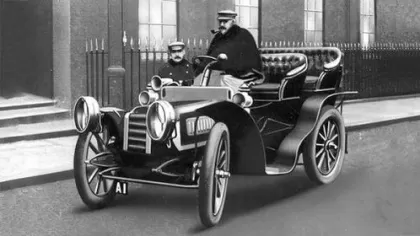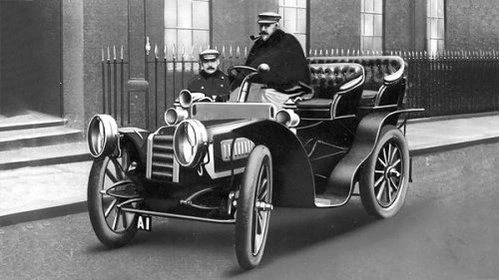How License Plates to Identify Vehicles Were Created
Technology changes things. In 1896, the country enacted the Locomotive and Highways Act. This decision inspired motor vehicles to become more popular. The Act permitted a higher speed limit across the country. It also added safety measures like compulsory lights and driving on the left side of the road. This was the Act that required people to register their vehicles through the local council, resulting in the need for number plates.

Why Number Plates Became Necessary
When the 20th century arrived, the number of motor vehicles that were transporting people around the country reached about 5,000. That may not seem like many today, but it was a lot at the time. In 1903, the Motor Car Act was passed. The Act was put in place to identify vehicles and those who were driving them. To identify them, the Act required people to display registration information in places where they could be seen.
First Car Registration Information
The first car registration marks included one number and one letter. The letter “A” was first, and the London County Council issued it in 1903. This method of using a single number and letter continued until the council ran out of all possible combinations. When that occurred, they changed the format to two letters and as many as four numbers.
This initial system is referred to as the Dateless one, and local authorities used it from 1903 to 1932. The single letter or pair of letters displayed at the start of a registration is called the Tag, and it lets law officials, insurance professionals and others know the local authority that any motor vehicle is registered to. For instance, A is registered in London, B is registered in Lancashire and C is for Yorkshire. The tags in England and Wales were originally assigned based on population size while Ireland and Scotland used sequences with the letters "I" and "S" respectively. These were distributed alphabetically, so Antrim received IA as its designation while Armagh received IB. When licensing authorities got to 9999, the area was assigned another tag. However, they failed to create a pattern for these additional allocations. Instead, they distributed them on a first need basis.
The Roads Act
Several motor vehicle acts were introduced during the early 1900s. An act in 1909 initiated a road tax so that local authorities had access to funds for road improvements. Also, the Roads Act was put into place during 1920. This Act brought about a big change because it required car registration at the time of licensing. It also resulted in a separate number being assigned to each vehicle. The problem with this registration method was that the more populated areas ran out of numbers and letters more quickly than other areas. For instance, Liverpool ran out by 1927, but the one assigned to the Bute Council lasted until 1963. Areas that ran out of sequences received a new format with three letters and three numbers, and when they ran out of possible sequences for this one, the order was reversed to three numbers and three letters.
Personalised Number Plates
Personalised number plates have been around in the UK for as long as the number system. In fact, the first one issued was personalised. When news of the registration process became known, Earl Russel wanted the first one. He ordered his butler to wait at the London office overnight so he could receive the registration number. Today, you can request a personalised plate, but there is a fee involved.
Introducing New Number Plates
During the 1950s, everyone started buying cars. In London, from 1950 to 1970, the number of people who owned cars quadrupled. This happened due to a better standard of living and motor vehicles becoming cheaper with mass production methods. The auto ownership boom meant that dateless plates were no longer possible, and in 1963, this brought about a new format called suffix registration marks. With this format, registrations included three letters and up to three digits along with the letter "A." For instance, a motor vehicle registered in 1963 would have the letter "A" on the end. In 1964, this was changed to the letter "B" and so on. The new system allowed for 255 million possible combinations yearly, which was plenty until 2001.
In 2001, a new format was initiated, one that used numbers to indicate vehicle age. This format involves two letters, two numbers and three additional letters. It allows something like 7 million possible marking combinations every 6 months. This should be enough for a while, but when change is needed, we know that officials are up to the task.


